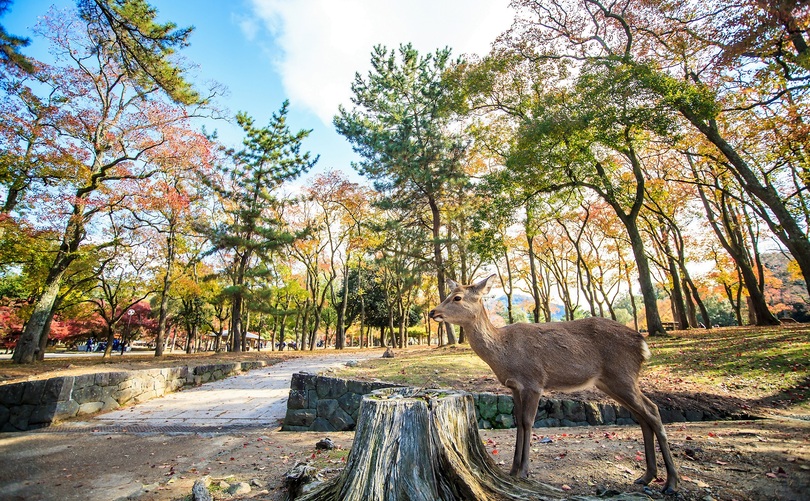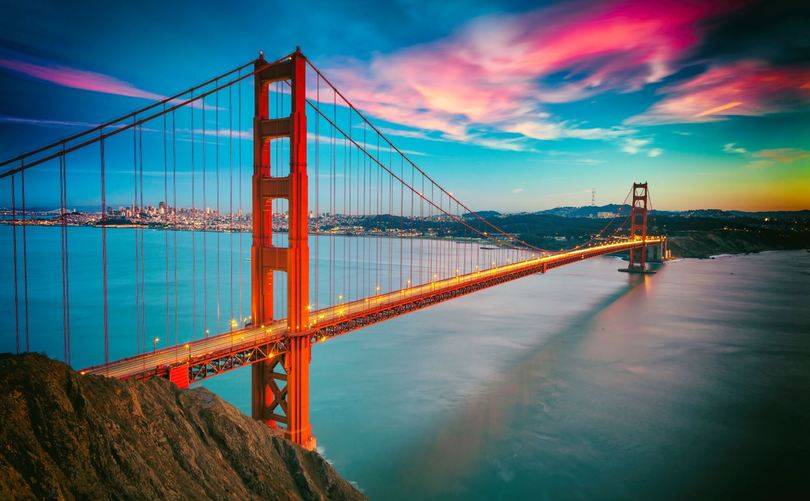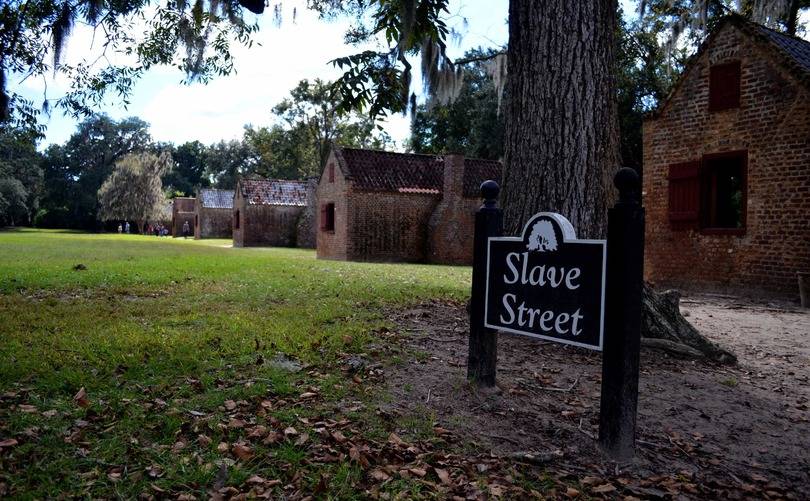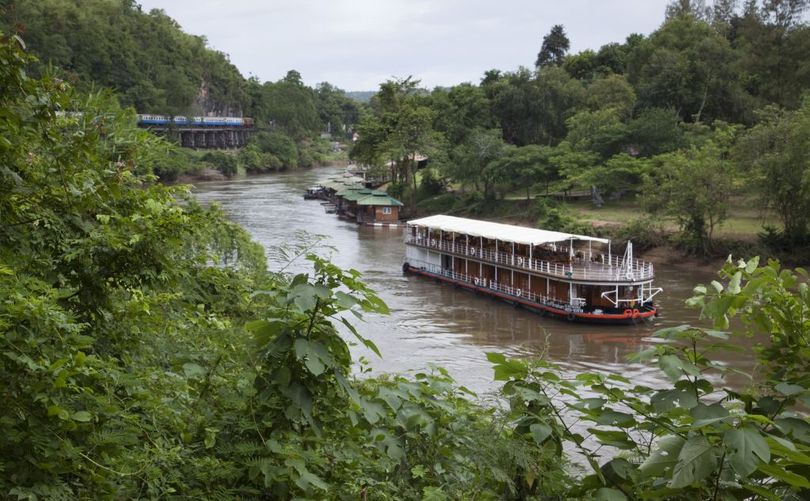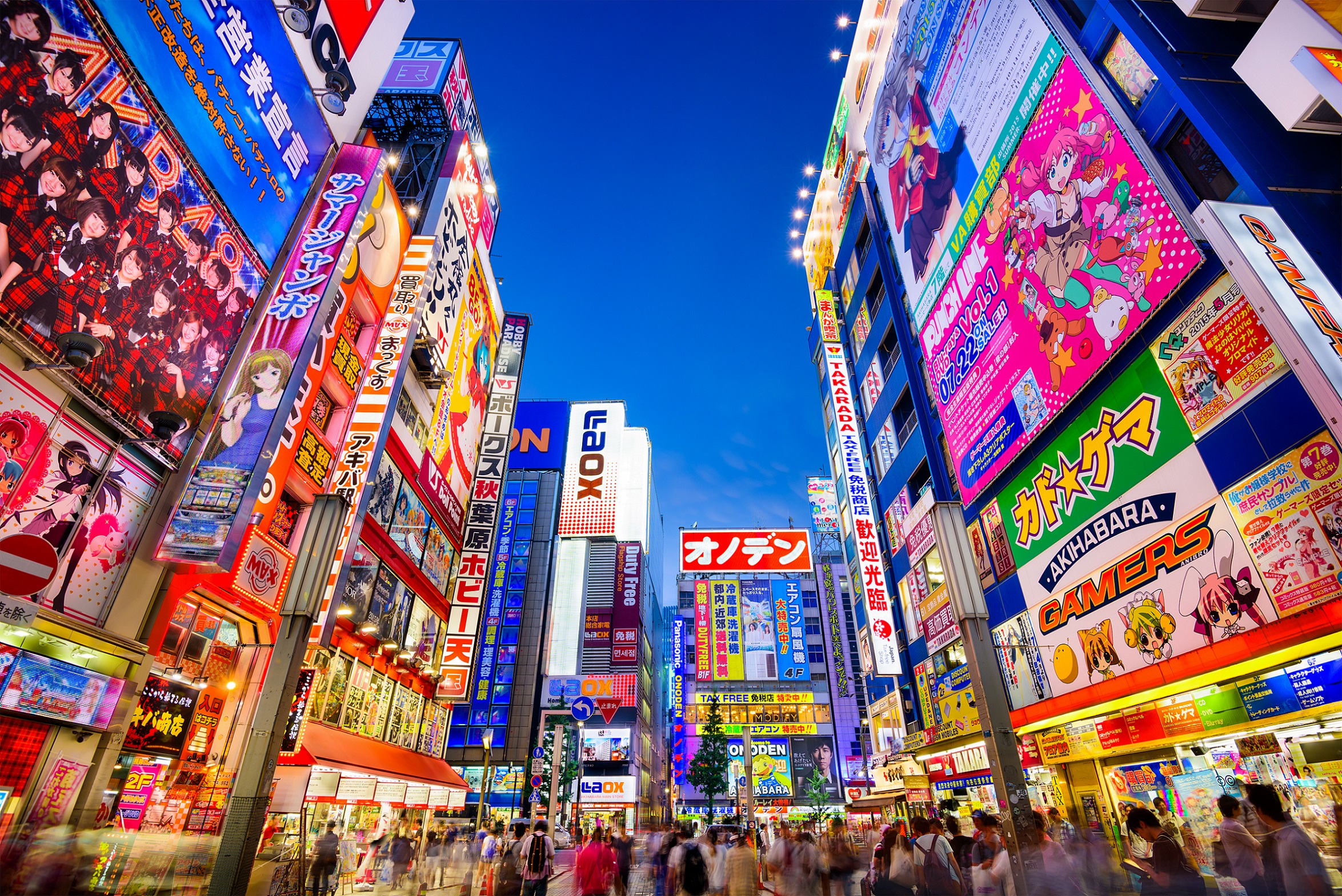
Highlights
- Tokyo is a city of contrasts
- Hamarikyu Gardens
- Meiji Shrine
- Asakusa
- Tokyo Metropolitan Government Building
- Kagurazaka
- Tokyo Skytree
- Tokyo Tower
- Tokyo Dome
- Mount Fuji
- Mt Owakudani
- Tokyo’s Shinjuku station
- Day 1 - Day 1 - Arrive in Tokyo
- Day 2 - Day 2 - Day Tour of Tokyo
- Day 3 - Day 3 - Hakone and Mt. Fuji
- Day 4 - Day 4 - Depart Tokyo
- Additional Information
One of the world’s most cutting-edge capitals, Tokyo is a city of contrasts. Famous for its cutting-edge modernity, neon-lit landscape and towering skyscrapers, it is also home to sprawling parklands, peaceful shrines and temples, and lovingly tended gardens. Despite its love affair with manga
pop culture, fashion, high-tech trends and conspicuous consumption, below the surface is a city embedded in ancient heritage. Shinto shrines and Buddhist temples stand close to skyscrapers as a reminder of a more contemplative time and at the heart of the hyperactive centre lies the serene Imperial Palace – home of the ruling emperor – providing a tangible
link to the city’s ancient past. Behind the shopping, entertainment and commercial emporia are the quaint wooden houses, private gardens with meticulously clipped bonsai trees, and the calming Hamarikyu Gardens. The city’s reputation as a costly metropolis is ill conceived and visitors can take advantage of the inexpensive izakaya bars and neighborhood cafes that serve delicious noodles and rice dishes.
On arrival at Narita Airport, you will be met in the arrival hall by your driver who will assist you with the included shared transfer to your hotel (60 – 90 minutes).
The remainder of the day is at your leisure.
Shiba Park Hotel
Shiba Park Hotel is a well-established 4-star hotel located in the heart of Tokyo’s Minato district, offering a perfect blend of comfort, convenience, and traditional Japanese hospitality. Positioned near Tokyo Tower and within walking distance of Shiba Park, this hotel provides easy access to both cultural landmarks and modern city attractions. Its serene yet central setting makes it ideal for both business and leisure travelers. Haneda Airport is just a short drive away, adding to its accessibility for international guests.
Take a day tour of this fascinating city with a local guide, making use of Tokyo’s comprehensive and user friendly public transport system. The day begins with a visit to Meiji Shrine, a shrine dedicated to the deified spirit of Emperor Meiji and a popular place for traditional Japanese weddings. Take a walk down Omotesando shopping street, a broad tree lined avenue home to the flagship stores of the world’s top fashion brands. Then you will head across town to Asakusa where you can soak in the atmosphere of old-time Tokyo. Afterwards, you will visit Sensoji, Tokyo’s oldest temple and wander down Nakamise, a shopping street that has been providing temple visitors with a variety of traditional local snacks and tourist souvenirs for centuries. A boat cruise on the Sumida River passing under 12 bridges will take you to Hamarikyu Garden, an Edo Period Japanese garden surrounded by Shiodome district’s futuristic skyscrapers – a great example of how Japan is the land of contrasts. There, you can stop for a cup of steaming matcha and Japanese sweets at a tea house on the island of the park’s lake.
Meals Included: BreakfastShiba Park Hotel
Shiba Park Hotel is a well-established 4-star hotel located in the heart of Tokyo’s Minato district, offering a perfect blend of comfort, convenience, and traditional Japanese hospitality. Positioned near Tokyo Tower and within walking distance of Shiba Park, this hotel provides easy access to both cultural landmarks and modern city attractions. Its serene yet central setting makes it ideal for both business and leisure travelers. Haneda Airport is just a short drive away, adding to its accessibility for international guests.
Hakone is a natural wonderland and is famous for its hot springs, outdoor pursuits and the view of the nearby Mount Fuji. It is part of the Fuji Hakone-Izu National Park and is less than 100-km from Tokyo, providing a popular weekend destination for city residents keen to escape the frenzy of the capital. Besides the towering mountains, lakes and views of Mount Fuji, it is also blessed with charming historical sites. Beautiful Hakone has just about everything a vacationer could wish for.
Today leave Tokyo behind as you journey to Hakone, the gateway to Mt Fuji and surrounding national park. Your local guide for the day will accompany you on the journey there.
To explore the National Park, you can take advantage of the numerous forms of transport on offer. First, you'll make your way by road to Choanji Temple. This quiet, littleknown corner of the area has a history stretching back to the 14th Century and features pleasant walking trails threading through a quiet grove. What makes this temple unique is the two hundred plus "rakan" statues (statues of Buddhist desciples) scattered across its grounds. It is one of the most extensive and unique collection of rakan in Japan and it is easy to get lost in the whimsical, human like quirks of each statue.
Next, you will travel by water. Jumping on a stylish cruise boat, you will glide across Lake Ashi. You will be able to see Mt Fuji from the lake if the weather is clear. You'll next make your way up the Komagatake Ropeway. Again, if the weather is on your side, you can enjoy views of Mt. Fuji on the right-hand side of the ropeway. The ropeway takes you to the summit of Mt Komagatake, from which you can see amazing panoramic views of Lake Ashi, Hakone and Mt Fuji if you are lucky. Heading down the ropeway, you will pick up a cruise again across to Sekisho-Ato, which was once part of Hakone's old town.
After lunch (not included) and a stop by a local craft shop selling puzzle boxes, a local speciality, you will explore the area as those hundreds of years ago will have done-- on foot! You and your guide will head to one of the few original stretches of the Tokaido Road that ran from Tokyo to Kyoto. Much of it is now main road and railway lines, but this 500m stretch preserves the original tall cedar trees and some of the old paving stones. The walk is very flat and takes just about 20 - 30 minutes to complete depending on your fitness level. Be advised that the trail can be a little boggy if the weather is or has recently been wet so waterproof footwear is advised.
Note: Throughout the day you will have the chance to get a glimpse of Mt Fuji, however please keep in mind that she is a notoriously shy mountain and it needs to be a clear day. Please wear waterproof, comfortable footwear for the short Tokaido Road walk.
Shiba Park Hotel
Shiba Park Hotel is a well-established 4-star hotel located in the heart of Tokyo’s Minato district, offering a perfect blend of comfort, convenience, and traditional Japanese hospitality. Positioned near Tokyo Tower and within walking distance of Shiba Park, this hotel provides easy access to both cultural landmarks and modern city attractions. Its serene yet central setting makes it ideal for both business and leisure travelers. Haneda Airport is just a short drive away, adding to its accessibility for international guests.
GREAT BOILING VALLEY
Great Boiling Valley Hakone is an active volcanic valley. The Great Boiling Valley (Owakudani) is famous for its black boiled eggs - Kurotamago.
Owakudani, also called Jigokudani ("the Valley of Hell"), is a volcanic valley with active sulphur and hot springs in Hakone. Black egg, called Kuro-Tamago in Japanese, is a local specialty, which is a hard-boiled egg in this hot spring. The boiled egg turn black and smell slightly sulphuric. It is said that consuming the egg is to increase longevity. Eating one is said to add seven years to your life!
HAKONE SHRINE
Hakone Shrine is a very popular shrine in the Hakone region. Part of Hakone Shrine complex is on the summit of Mt Komagatake and the other part is on the edge of Lake Ashi.
Hakone Jinja Shrine (commonly referred to as Hakone Shrine) is located on the eastern side of Lake Ashi (Hakone) and at the base of Mt Komagatake. Hakone Jinja Shrine is dedicated to . Hakone Jinja Shrine is a very popular attraction with more than 20 millions visitors a year. It is particularly popular for New Year celebrations.
Hakone Jinja Shrine has three distinctive features and three different routes of entry.
Torii on Lake Ashi - The torri (gate) on the lake's edge appears to be floating in the water. In theory you could reach Hakone Jinja Shrine by going through this gate from a small boat. In practice you normally walk down the heavily forested path from the shrine to the edge of Lake Ashi.
Torii in Moto-Hakone - There are two large torii in the main street of Moto-Hakone. The path to Hakone Jinja Shrine is from the Moto-Hakone pier via the main street following the path to the shrine
Hakone Komagatake Ropeway - On the summit of Mt Komagatake is the Hakone Shrine Motomiya, the original shrine. You can also reach this shrine via a hiking trails.
HAKONE CHECKPOINT
Hakone Checkpoint is a historic checkpoint on a main transport route to and from Tokyo. The Hakone Checkpoint is located next to Lake Ashi.
Hakone Checkpoint is a historic checkpoint on a main transport route to and from Tokyo. Tokugawa Shogun placed 53 checkpoints on major roads across the nation to defend Tokyo during Edo period (17-19 century). Hakone Checkpoint was one of the largest and important among them. The Hakone Checkpoint was placed on the current location in 1619, during an early Edo period. One of the main roles of the Hakone Checkpoint was to control 'incoming guns and outgoing women', which means to prevent weapons from being brought into Tokyo and wives and children of feudal lords from fleeing from Tokyo. Today, you can experience the history from this well restored facility.
HAKONE OPEN AIR MUSEUM
Hakone Open Air Museum is an art museum featuring paintings and outdoor sculptures. Hakone Open Air Museum exhibitions include works from famous artists including Picasso. The Hakone Open Air Museum consists of five exhibition halls including the Picasso Pavilion and 70,000m2 of rolling gardens with around 120 outdoor sculptures. Hakone Open-Air Museum opened in 1969 as the first open-air art museum in Japan. In addition there is a foot bath to sooth your tired feet in, which is fed from a natural hot spring.
HAKONE-EN AQUARIUM
Hakone-en Aquarium is both a fresh-water and salt water aquarium in Hakone-en, Hakone. Hakone-en Aquarium has thousands of fish on display, plus seals and penguins.
Hakone-en Aquarium is both a fresh-water and salt water aquarium in Hakone-en, Hakone. Hakone-en Aquarium is said to be the highest salt water aquarium in Japan. Hakone-en Aquarium displays over 2,000 rare fresh-water fish from 150 species including the so called 'living fossil', protopterus, the African Lungfish. The saltwater section of the Hakone-en Aquarium features a massive tank measuring 17 m wide, 11m front to back and 7 m deep. This tank displays over 20,000 salt-water fish and some penguins.
There is also the "Baikal Seal Square" attraction on the edge of Lake Ashi (outside of the aquarium) which is popular with the passing crowds.
MT KOMAGATAKE
Mt Komagatake is a mountain in the Hakone region which features a ropeway, scenic views of Hakone and surrounds. The summit of Mt Komagatake also features part of the Hakone Jinja Shrine.
Mt Komagatake is in the Hakone region of Kanto. On its western side is Lake Ashi. On a clear day, there are excellent views of Lake Ashi and surrounds from the summit of Mt Komagatake. The summit of Mt Komagatake can be reached via the Hakone Komagatake Ropeway, an aerial lift that rises from Hakoneen at the edge of Lake Ashi.
In addition to an observation point, the summit of Mt Komagatake also features part of the Hakone Shrine.
Picture above: Hakone Motomiya Shrine is the original part of the Hakone Shrine complex. Hakone Motomiya Shrine is at the summit of Mt Komagatake. The two poles on top of the shrine are not radio antennas, they are lightning rods which help protect the shrine from lightning strikes.
LAKE ASHI
Lake Ashi Hakone is a popular tourist destination, famous for the pirate ships and picturesque views of the surrounding mountains and the floating torii of Hakone Shrine. Lake Ashi , often referred to as Hakone Lake, but formally known as Ashinoko Lake, is a scenic lake in the Hakone area of Kanagawa Prefecture in Honshu, Japan. Lake Ashi is a crater lake that lies along the southwest wall of the caldera of Mount Hakone, a complex volcano. Lake Ashi is known for the numerous Onsen (hot springs) in the area. Lake Ashi is also promoted for its views of Mt Fuji, however the chances of see Mt Fuji are low due to the frequent low cloud and mist. At best you will only see part of the Mt Fuji cone.
Several pleasure boats and ferries traverse the lake, providing scenic views for tourists and passengers. One of the boats is a full-scale replica of a man-of-war pirate ship.
HAKONE KOWAKIEN YUNESSUN
Hakone Kowakien Yunessun is famous a hot springs spa resort and water amusement park. Hakone Kowakien Yunessun is a hot springs spa resort and water amusement park. From spa facilities in the European style, to Onsen in the traditional Japanese style, to fun and wild water recreation amusements, Yunessun has a unique blend of relaxation and water recreation for people of all ages.
HAKONE KOMAGATAKE ROPEWAY
Hakone Komagatake Ropeway provides a scenic view of Hakone and surrounds. The Hakone Komagatake Ropeway runs from the edge of Lake Ashi to the summit of Mt Komagatake. The Hakone Komagatake Ropeway is the aerial lift that rises from Hakoneen at the edge of Lake Ashi (Hakone) to the summit of Mount Komagatake. On a clear day, there are excellent views of Lake Ashi from the summit of Mount Komagatake. From the summit you can also access part of the Hakone Jinja Shrine.
HAKONE ROPEWAY
Hakone Ropeway provides scenic views of Hakone and Mt Fuji on a clear day. The Hakone Ropeway runs between Sounzan, via Owakudani to Togendai on the edge of Lake Ashi. The Hakone Ropeway is the aerial lift (funitel line) that links Sōunzan and Togendai, all within Hakone, Kanagawa, Japan. The line became funitel in 2002, the second of its kind in Japan. The Hakone Ropeway is part of the sightseeing route between Odawara and Lake Ashi. See also the Hakone Komagatake Ropeway.
Your day is free until your included shared transfer to Narita Airport (60-90 minutes)
Meals Included: Breakfast
Please note:
- Accommodation during peak seasons, national holidays and weekends may be subject to a surcharge
- Accommodation subject to availability at time of booking
Your tour package includes:
- Accommodation as per above itinerary in twin share rooms with daily breakfast included
- Tours and transfers as specified including entry fees
- Service of English Speaking Local Guides as specified
- Meals as specified in the above itinerary (drinks are not included)
Your tour package excludes:
- International and domestic airfares
- Meals other than specified as included
- Travel Insurance or expenses of a personal nature (minibar, phone call, laundry, etc.)
- Drinks or personal expenses or entrance fees for any extra sightseeing or optional activities








